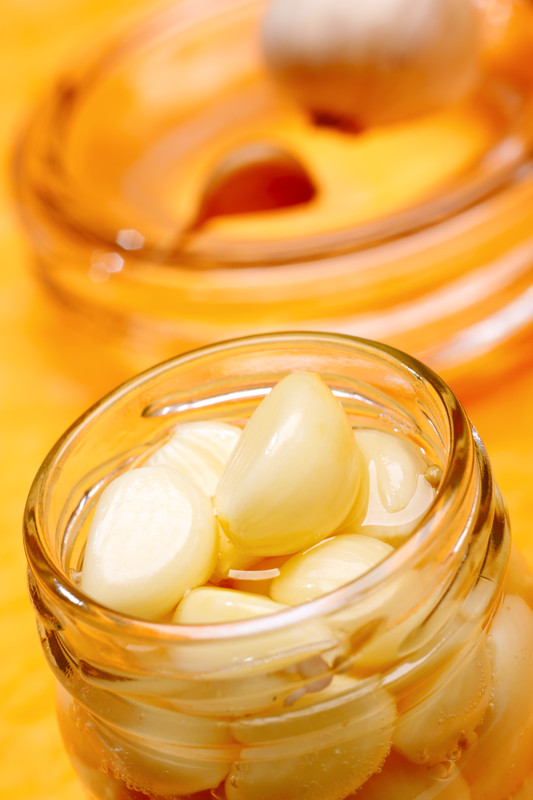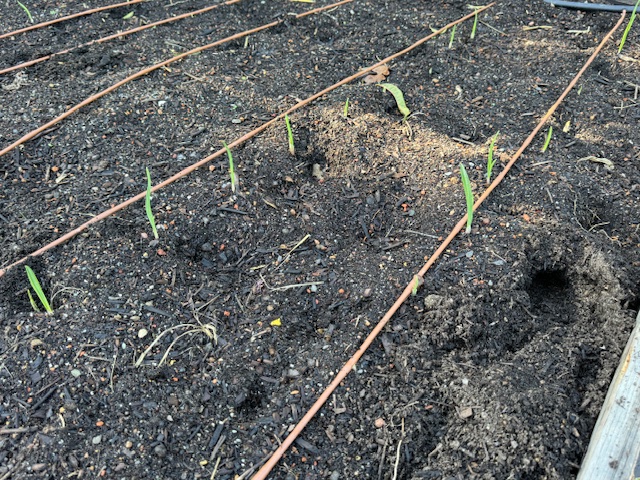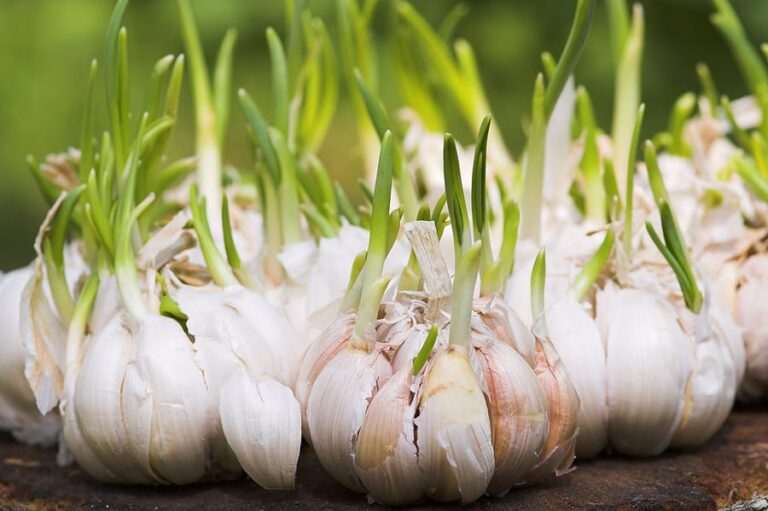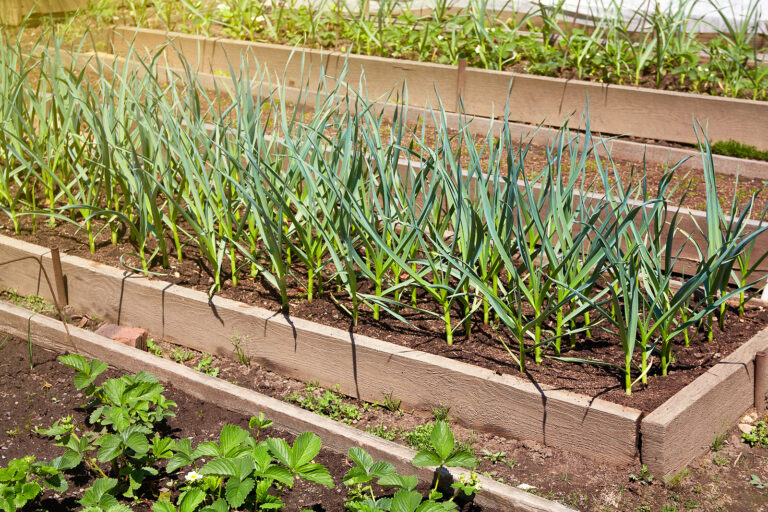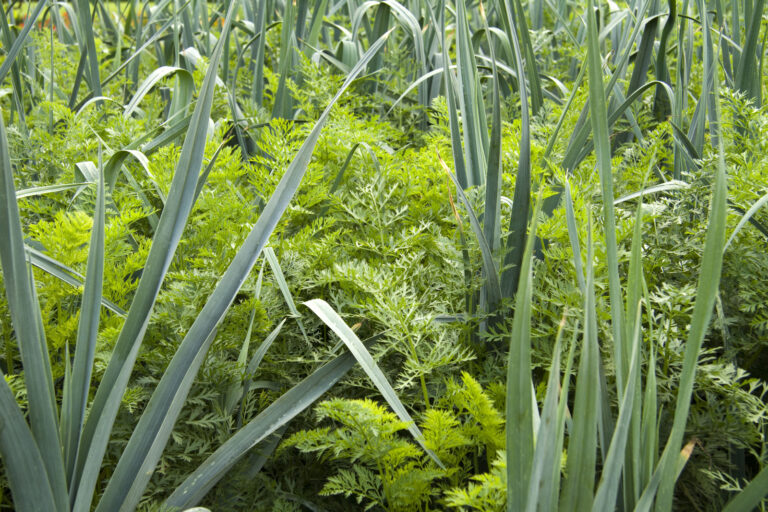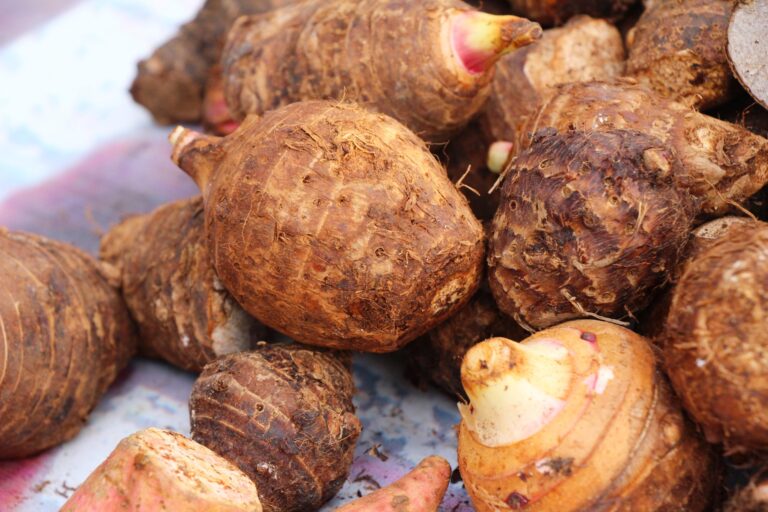Best Ways to Store and Preserve Garlic at Home
Freshly harvested garlic is one of the most rewarding crops for home gardeners. But after all the work of planting, tending, and curing, the next step is crucial: storing and preserving your garlic properly so you can enjoy it year-round.
I’ve been growing and storing garlic for more than 30 years in California’s Central Valley and Sonoma Valley, and through trial and error I’ve tested nearly every method. Below are the most reliable ways to keep garlic flavorful and safe for months after harvest.
Short-Term Storage: Fresh Garlic
- Pantry storage: Keep cured bulbs in a cool, dark, and well-ventilated space at 50–60°F (10–15°C).
- Avoid refrigeration: Cold temperatures encourage sprouting.
- Best containers: Mesh bags, baskets, or paper bags—never plastic, which traps moisture.
🌱 Tip: Softneck garlic stores longer than hardneck—up to 9 months compared to 4–6 months.
Freezing Garlic
Freezing preserves garlic flavor when you need long-term storage beyond the natural shelf life.
Methods I recommend:
- Whole cloves (peeled or unpeeled): Place in freezer-safe bags. Texture changes when thawed, but flavor remains strong.
- Chopped garlic: Mince, then freeze flat in small portions for quick use in cooking.
- Garlic paste: Blend garlic with olive oil, spread thin on a tray, and freeze. Break off small pieces as needed.
Drying Garlic
Drying removes moisture, making garlic shelf-stable for months to years.
- Dehydrator method: Slice cloves thin and dehydrate at 125°F (52°C) until crisp.
- Oven method: Bake at lowest setting with door cracked open; watch carefully to prevent burning.
- Storage: Keep dried garlic in airtight jars in a dark, cool pantry.
🌱 Extra step: Grind dried garlic into homemade garlic powder for seasoning.
Pickling Garlic
Pickling not only preserves garlic but also creates a delicious, tangy condiment.
- Method: Peel cloves and place in sterilized jars. Cover with hot vinegar brine (vinegar, water, salt, sugar, and spices).
- Storage: Refrigerate pickled garlic for immediate use or process jars in a water bath canner for shelf stability.
- Flavor profile: Pickling softens raw garlic’s sharp bite while maintaining nutrition.
Which Method Is Best?
- For everyday cooking: Pantry storage of cured garlic.
- For long-term backup: Freezing or drying.
- For flavor variety: Pickling.
As a gardener, I rely on a combination of methods—keeping cured garlic in baskets, freezing extra cloves, and making garlic powder for winter soups.
🌱 Bottom line: Proper storage extends your harvest, while preservation methods like freezing, drying, and pickling let you enjoy garlic’s versatility all year.
Garlic Preservation Methods Comparison
| Method | Storage Life | Pros | Cons | Best For |
|---|---|---|---|---|
| Pantry Storage (Cured Bulbs) | 4–9 months (softneck longer) | Simple, no extra equipment, best flavor | Limited by variety and conditions | Everyday cooking, short–medium storage |
| Freezing (Cloves/Paste) | 6–12 months | Long-term, easy portioning | Texture changes, needs freezer space | Sauces, soups, quick seasoning |
| Drying (Slices/Powder) | 12–24 months | Very long shelf life, concentrated flavor | Requires dehydrator/oven, time intensive | Garlic powder, spice blends |
| Pickling (Vinegar Brine) | 3–6 months (fridge) / 12+ months (canned) | Unique flavor, probiotic potential | Alters garlic flavor, needs jars/canning | Condiment, antipasto, flavor variety |
🌱 Gardener’s tip: I cure most of my garlic for pantry use, freeze extra cloves, and turn smaller bulbs into garlic powder.
Garlic Growing Hub
Start here: The Ultimate Garlic Growing Guide: From Seed to Harvest
🌱 Garlic Planting & Timing Clusters
- Garlic Plant Starting Tips: How to Get Going
- When to Plant Garlic: Fall vs. Spring Compared
- Garlic Planting Calendar by Zone (Month-by-Month Guide)
- Ideal Soil Temperature for Planting Garlic and Why It Matters
- Climate Guide: Growing Garlic in Warm vs. Cold Regions
🧄 Garlic Types & Varieties Clusters
- Softneck vs. Hardneck Garlic: Key Differences for Gardeners
- Best Softneck Garlic Varieties for Home Gardens
- Best Hardneck Garlic Varieties for Flavor and Storage
- Rocambole Garlic: What It Is and How to Grow It
- Elephant Garlic: Tips for Planting and Harvesting Giant Bulbs
🌿 Growing & Care Clusters
- Proper Garlic Spacing for Bigger Bulbs
- How to Water Garlic the Right Way
- Fertilizing Garlic: Feeding Tips Bigger, Healthier Bulbs
- Essential Garlic Care: From Planting to Harvest
- Best Companion Plants for Garlic (And What to Avoid)
- How to Grow Garlic in Containers: Step-by-Step Guide
🐛 Pests & Disease Clusters
🌾 Harvest & Storage Clusters
- How to Tell When Garlic Is Ready to Harvest
- How to Harvest and Store Garlic
- How to Cure Garlic for Long-Term Storage
- Best Ways to Store and Preserve Garlic at Home
🍳 Kitchen & Use Clusters
- Garlic Cooking and Severing Ideas for Your Harvest Table
- Fresh Garlic vs. Stored Garlic: Flavor and Cooking Differences
- Garlic Scapes: What They Are and How to Use Them
- Leeks vs. Green Onions vs. Garlic: What’s the Difference

